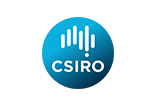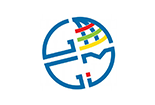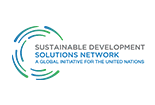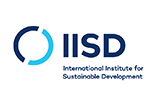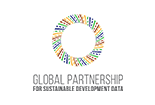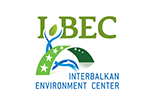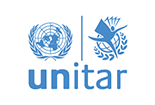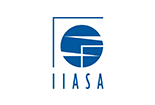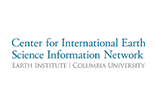Summary Report of Special Session on SDGs at AOGEO Symposium

Partnerships between Earth Observation and Statistical Communities for SDGs strongly encouraged at Special Session on SDGs at AOGEO Symposium
The first Special Session of the 13th Asia-Oceania Group on Earth Observations (AOGEO) Symposium, which took place on the 3rd of March, highlighted growing linkages and the need for strengthening partnerships between the Earth Observation (EO) and statistical communities to support countries in delivering on the 2030 Agenda for Sustainable Development. The online session, titled “Linking Earth Observations with Statistical Community for SDGs,” revealed that there are growing opportunities to use EO data for the SDG indicators, especially in the Asia and Pacific region, which is not on track to meet the ambitions of the 2030 Agenda and where data availability remains as a challenge.
The session attracted over 120 participants, consisted of two hours of live presentations and panel discussions by subject-matter experts from the GEO/AOGEO (represented by EO4SDG) and National Statistical Offices (from Japan, Malaysia, Mongolia and Fiji) and was co-led by two chair persons (from the Statistics Division of UNESCAP and MEXT/JAXA), who also represented the two communities.
All presentations by the statistical community recognized the strong interest in, and usefulness of, EO data to be integrated with and to complement traditional data systems, such as census data, administrative data and household and business survey data. The countries presenting at the session were at different stages of utilizing EO for SDG indicators (at the full use, work-in-progress and starting point) and looking at different goals and indicators as their national priorities vary: i.e. water/environmental ecosystem, urban development, agricultural productivity, access to roads and land cover. SDG indicators mentioned were 2.4.1; 6.6.1; 7.1.1; 9.1.1; 11.3.1; 11.7.1; 14.1.1; 15.1.1; 15.3.1; 15.4.2; and 17.19.2.
Given the above, it was clear that GEO/AOGEO is expected to strengthen its partnership with UN-ESCAP and other key stakeholders in supporting countries to make use of EO data and to share examples and guidance on what is possible by promoting active communications. In doing so, they can provide a variety of options to countries including, where possible, access to available data, methodologies, tools and services as well as capacity-building opportunities. Meanwhile, the panel discussion fleshed out some issues such as the cost of purchasing EO data and its quality or required resolutions. The next dialogue through a follow-up event for this seminar could possibly aim at shaping a concrete pilot project.
The session concluded with a strong emphasis on sharing country use cases which maximize the use of EO data for compiling SDG indicators for the 2030 Agenda for Sustainable Development at national, regional and global levels. The message was incorporated in the 2020 AOGEO Statement (in line 33-40).
Key Points Raised during the Panel Discussion
The main points presented by the panelists are shared below. More details including the webinar recording and speaker biographies are available at the 2020 AOGEO website for Day 1.
Mr. YOSHIKAI Shojiro, Director-General, Policy Planning on Statistical Standards, Ministry of Internal Affairs and Communications, presented status of Japan’s SDG indicator reporting and how EO is being applied. Importance of capacity development of NSOs and EO use for SDG reporting are recognized. SDG 6.3.2 (ambient water quality), 11.6.2 (air quality in cities), 11.3.1 (land use efficiency), 14.3.1 (ocean acidification) and 15.1.1 (forest cover) are already calculated using EO while SDG 6.6.1 (freshwater-related ecosystems), 11.7.1 (open public spaces), 14.4.1 (fish stocks sustainability) and 15.4.2 (mountain green cover index) are planned to be calculated.
Ms. Gemma Van Halderen, Director of the Statistics Division, ESCAP, who also served as a session co-chair, reported the progress of SDG indicator compilation in the Asia Pacific region. Asia-Pacific is not on track to meet the ambitions of the 2030 Agenda and data availability is a major challenge for tracking progress. While there is a lot of opportunity to use geospatial information for monitoring SDGs, country examples of use of geospatial information for official reporting of the SDGs is scarce in the region and AOGEO and ESCAP can cooperate to make a difference.
Dr. Argyro Kavvada, Program Manager of SDGs, NASA; EO4SDG Executive Secretary, presented on progress of the EO4SDG initiative which focuses on working with NSOs and the international statistical community. Recent activities include EO4SDG contributions to the SDG Geospatial Roadmap, which is led by the UN Working Group on Geospatial Information (WGGI), and the launch of the EO Toolkit for Sustainable Cities and Human Settlements.The EO4SDG website has a catalogue of EO use cases for SDG indicators, including a total of 22 cases from 8 countries. AOGEO and other regional initiatives can contribute and augment this ‘live’ catalogue.
Mr. OCHIAI Osamu, Manager of Satellite Application and Operation Center, JAXA; Technical Advisor of MEXT; EO4SDG Co-lead, who also served as a session co-chair, supplemented Mr. Yoshikai’s presentation by providing detailed explanation of JAXA’s activities for the estimation of several SDG indicators using satellite EO data. JAXA is currently cooperating with Japan’s NSO for validating indicator 15.4.2 (mountain green cover index) and plans to produce a guidance document.
Ms. Jamaliah Jaafar, Head of Core Team Big Data Analytics, Department of Statistics Malaysia, reported that GIS technology is widely used for national Population and Housing Census 2020 and a study is underway for identifying living quarters in remote areas for indicator 17.19.2 (countries that have conducted at least one population and housing census in the last 10 years) as well as for monitoring rubber plantations in compiling SDG indicator 2.4.1 (agricultural sustainability). The department has a strategic collaboration with the Malaysia Space Agency (MySA).
Ms. Bolortuya Jambaldorj, Statistician, National Statistics Office of Mongolia, reported GIS development and its use in Mongolia’s NSO in addition to experimental estimation for SDG 9.1.1 (rural access). Integrating the geospatial information and statistics database is crucial for SDG implementation, for example, contributing to SDG indicator 7.1.1 (access to electricity).
Ms. Litia Kurisaqila-Mate, Assistant Statistician, Fiji Bureau of Statics, reported Fiji’s efforts for SEEA (System for Environmental Economic Accounting) and compiling of Fiji’s experimental land cover accounts to report SDG 15.1.1 (forest cover), 11.3.1 (land use efficiency) and 2.4.1 (agricultural sustainability) in addressing sustainable land and ocean resource issues including sea level rise and climate change.
About the Author:
This article was provided by the JAXA EO4SDG team, which is led by Osamu Ochiai.






